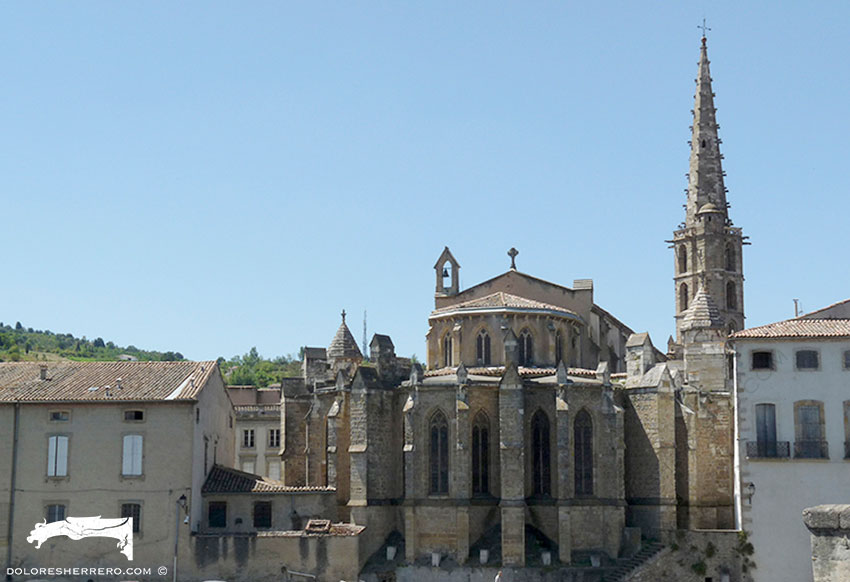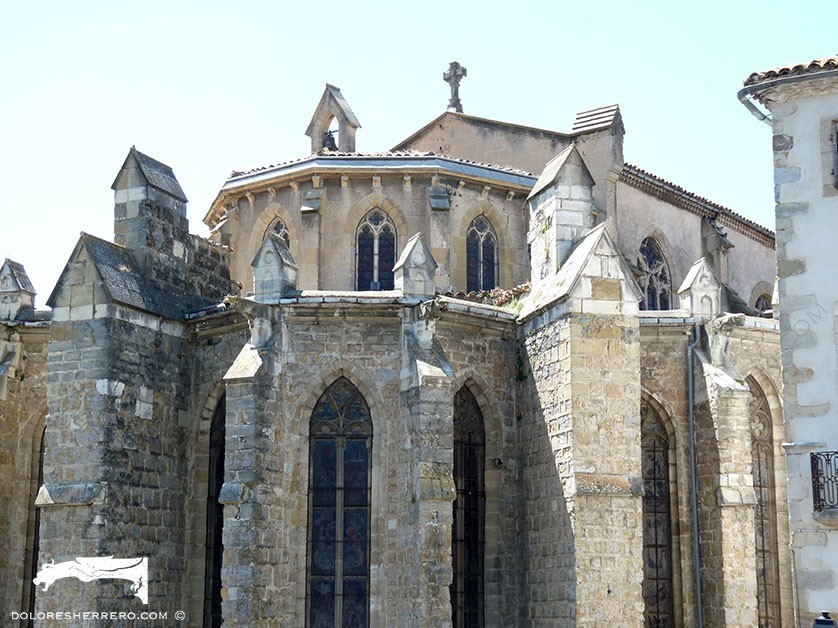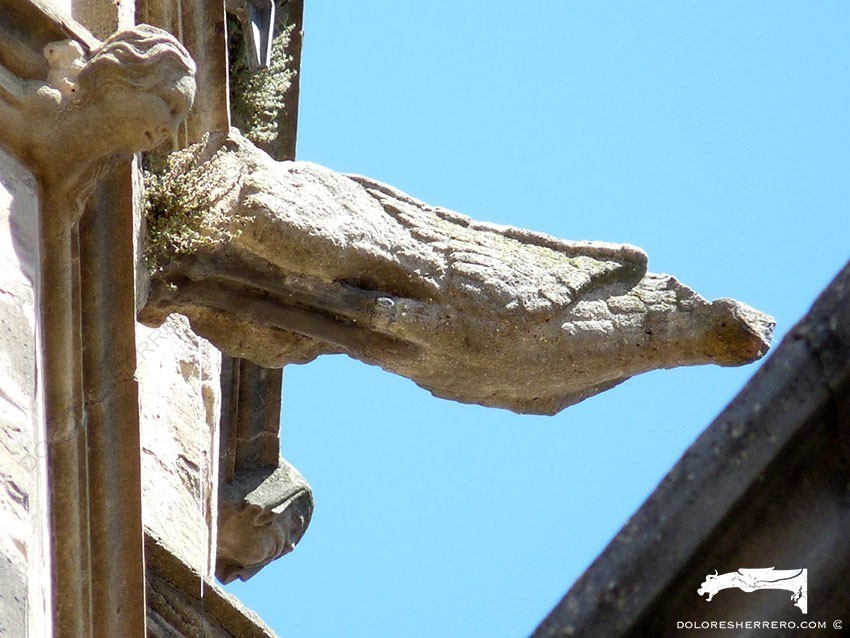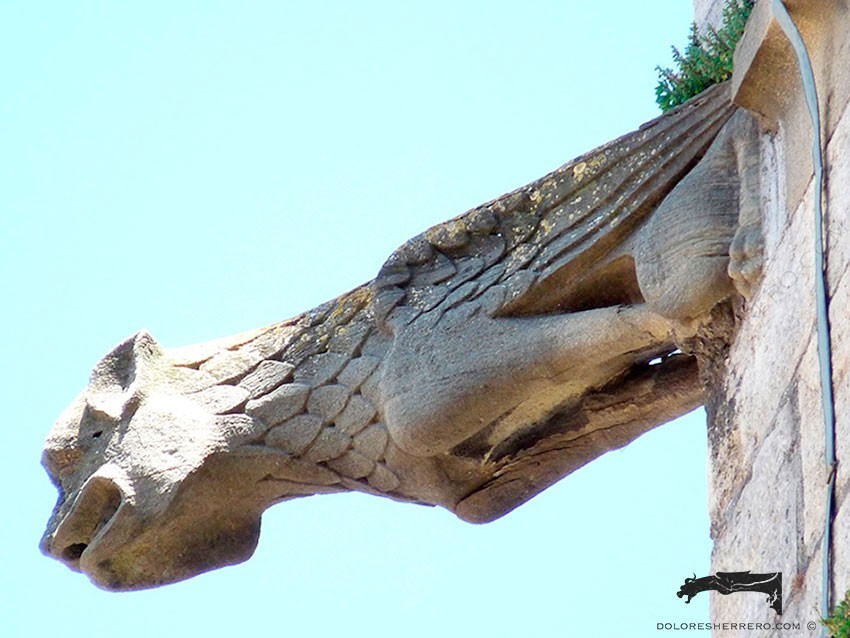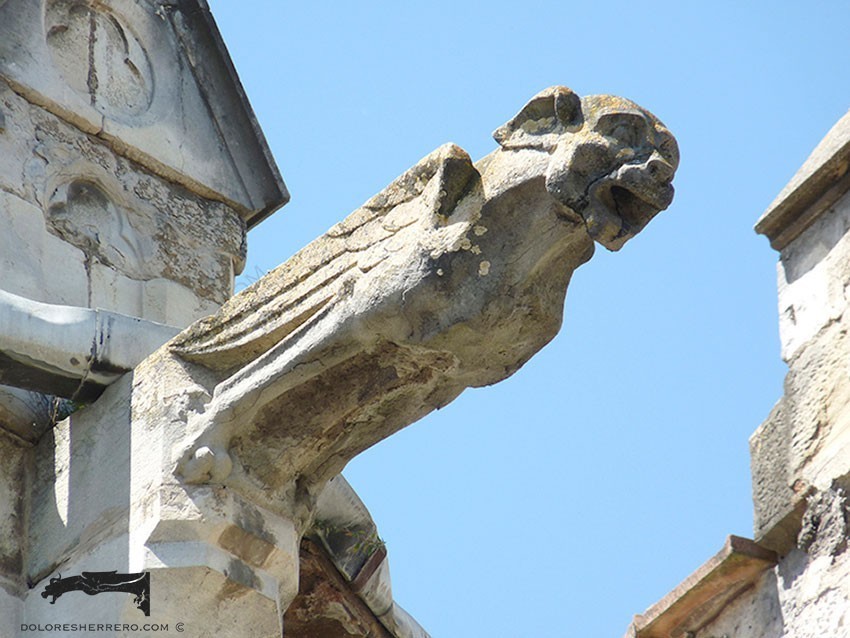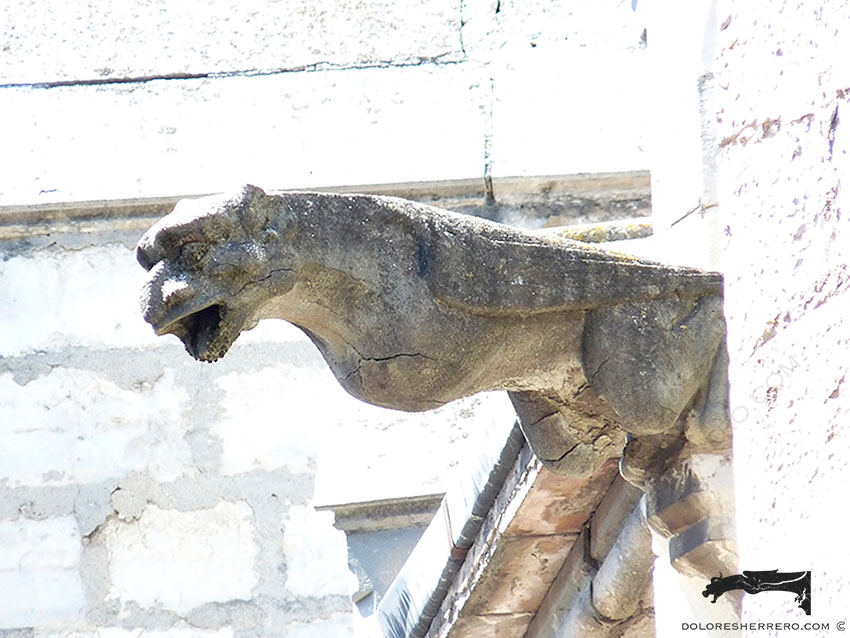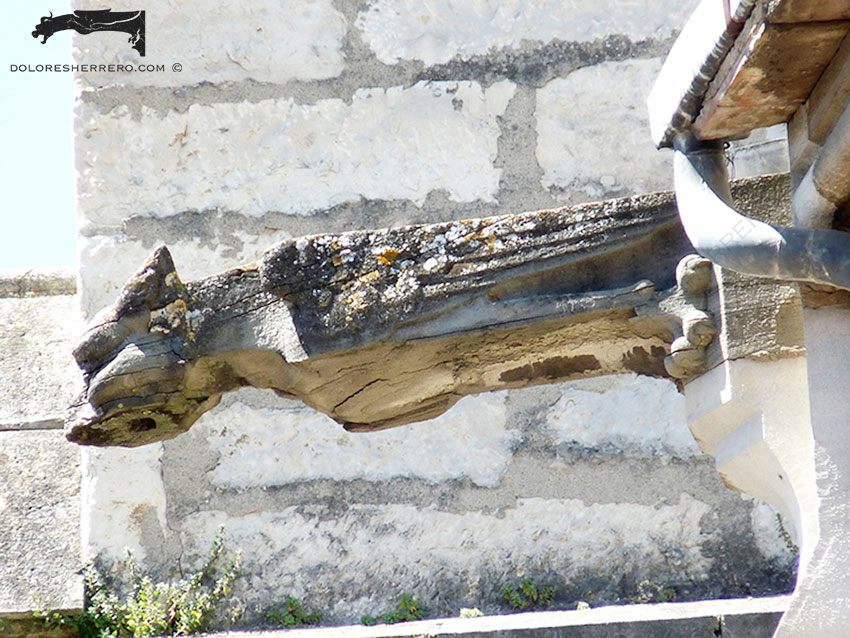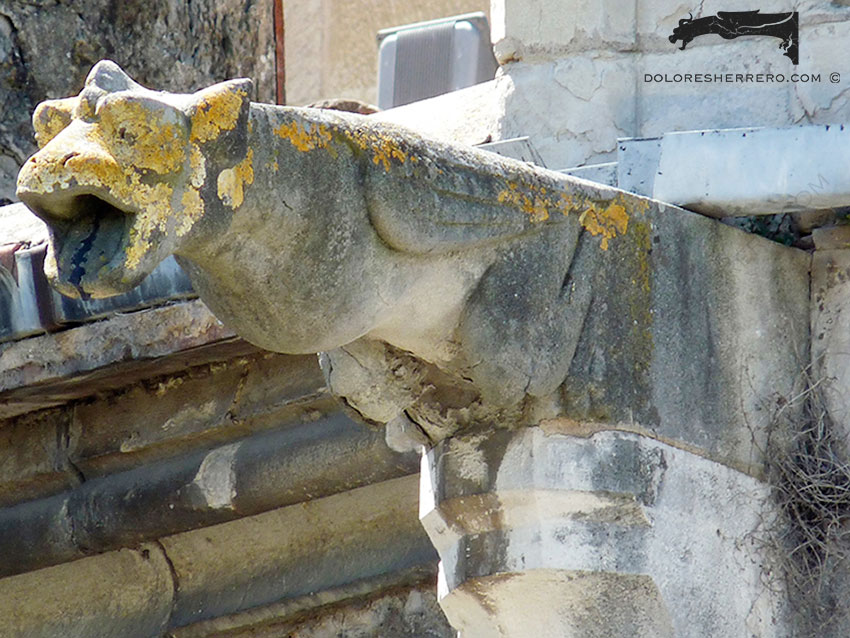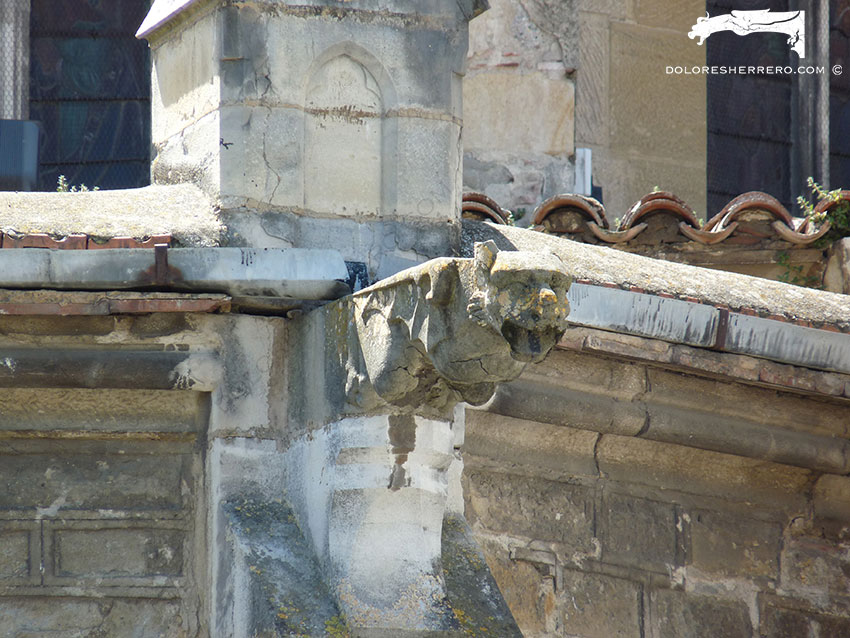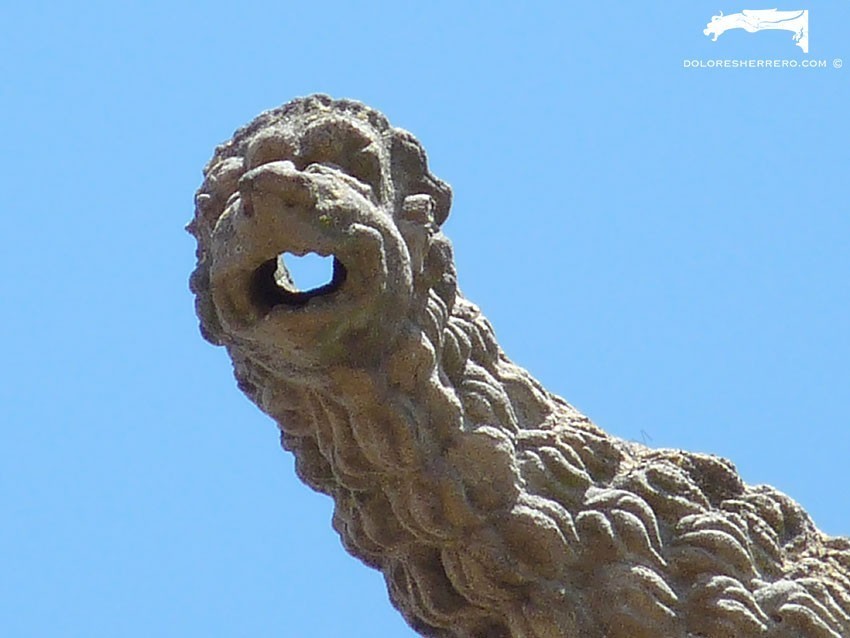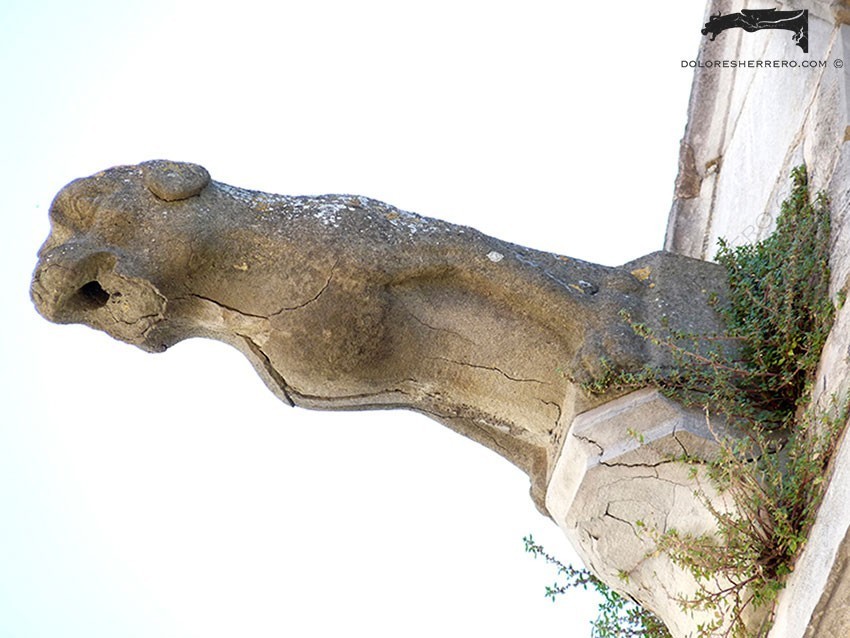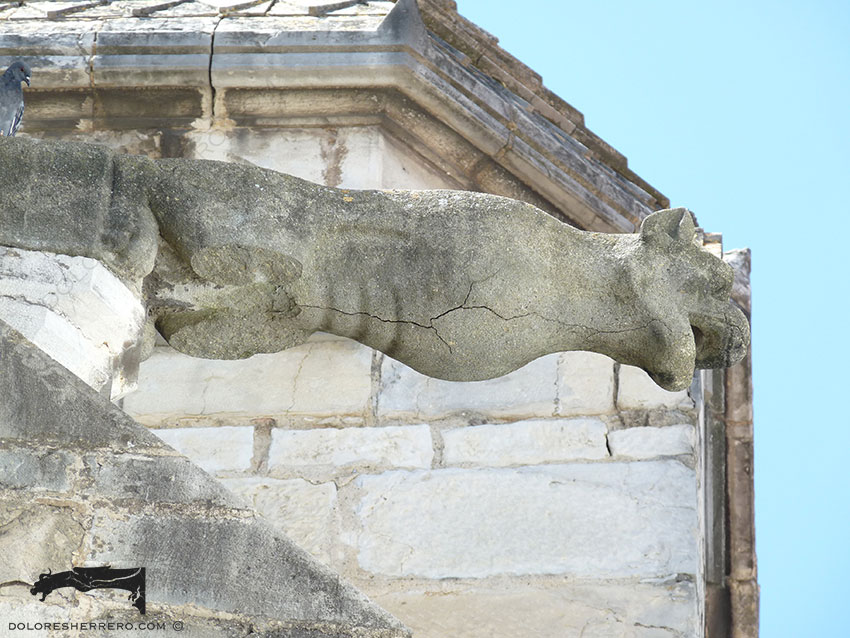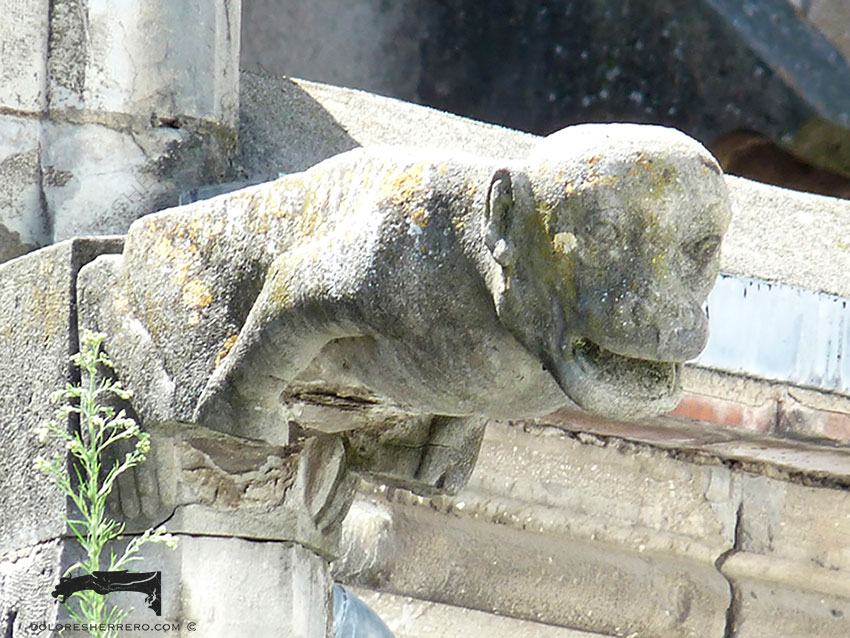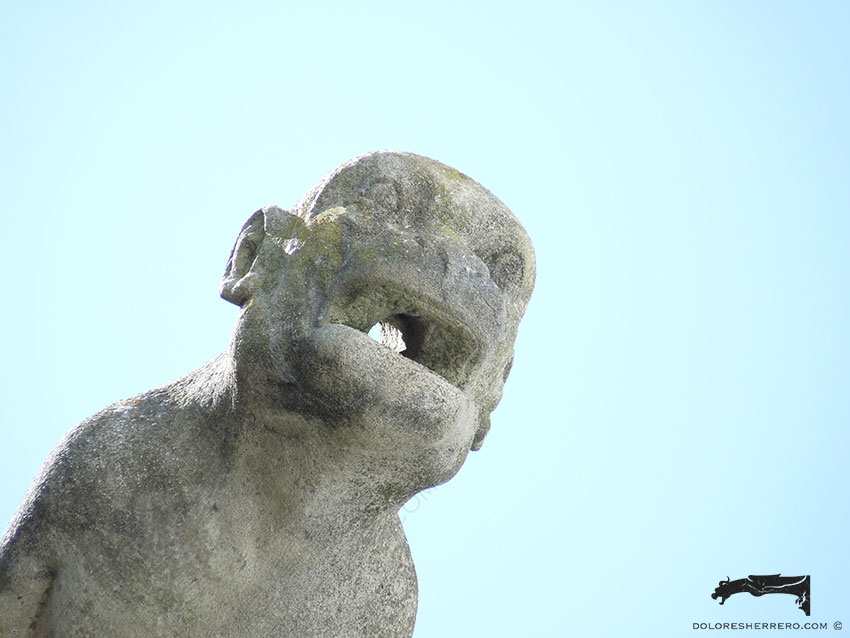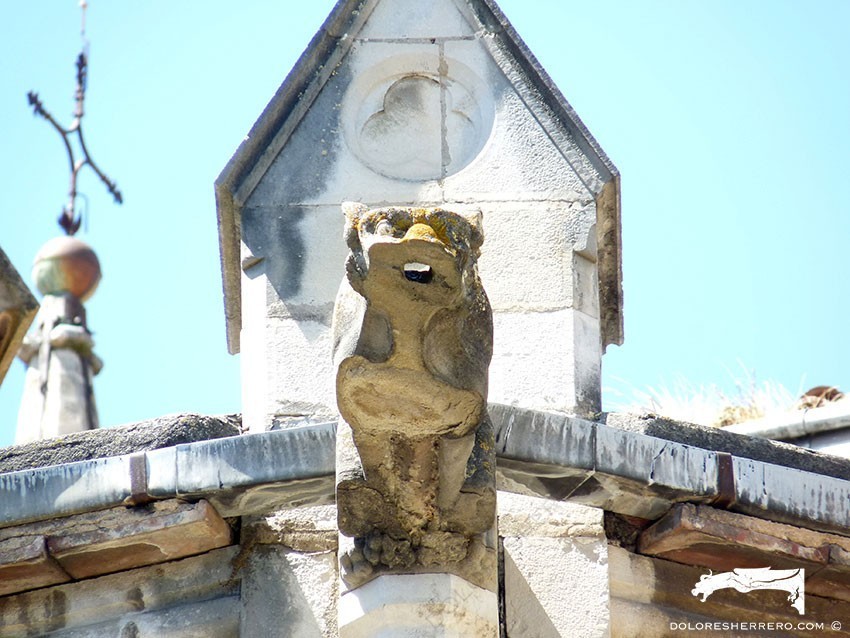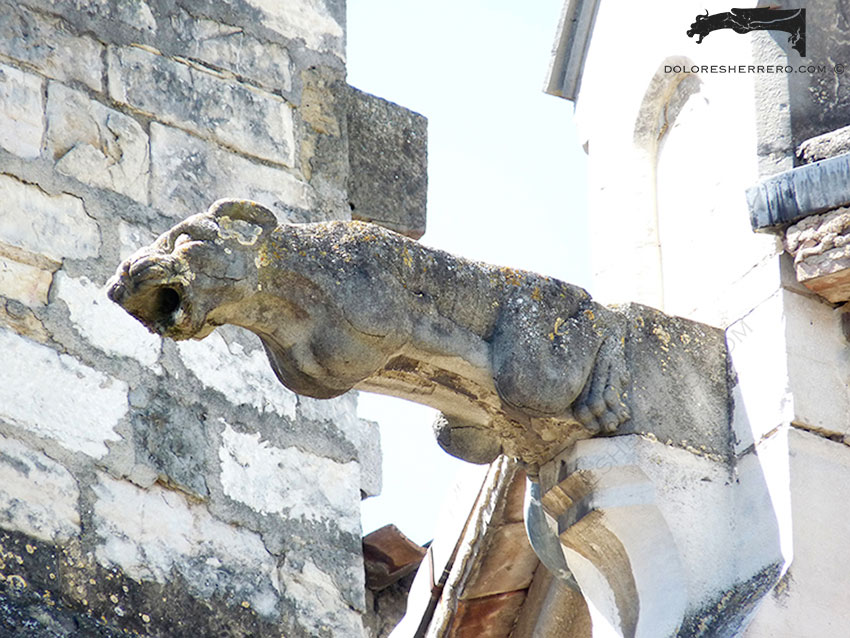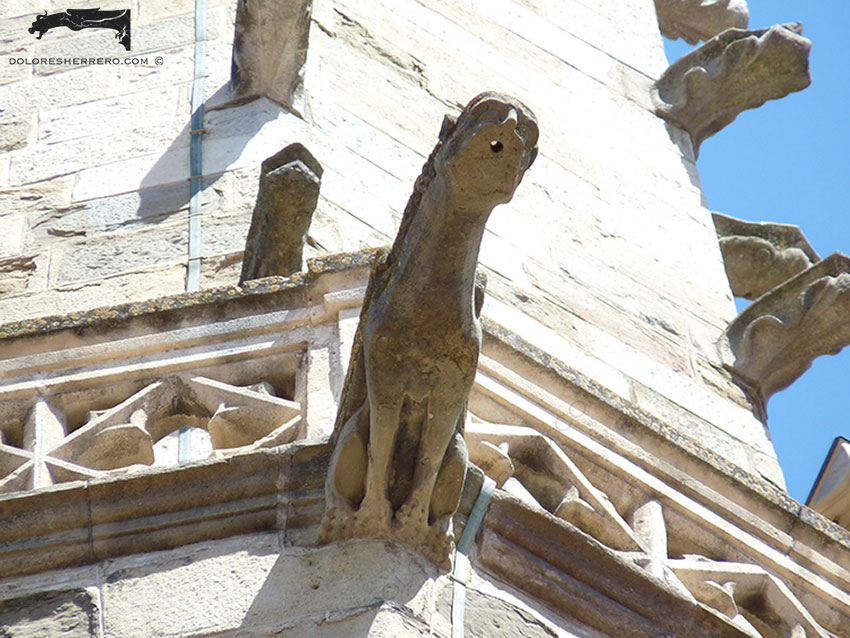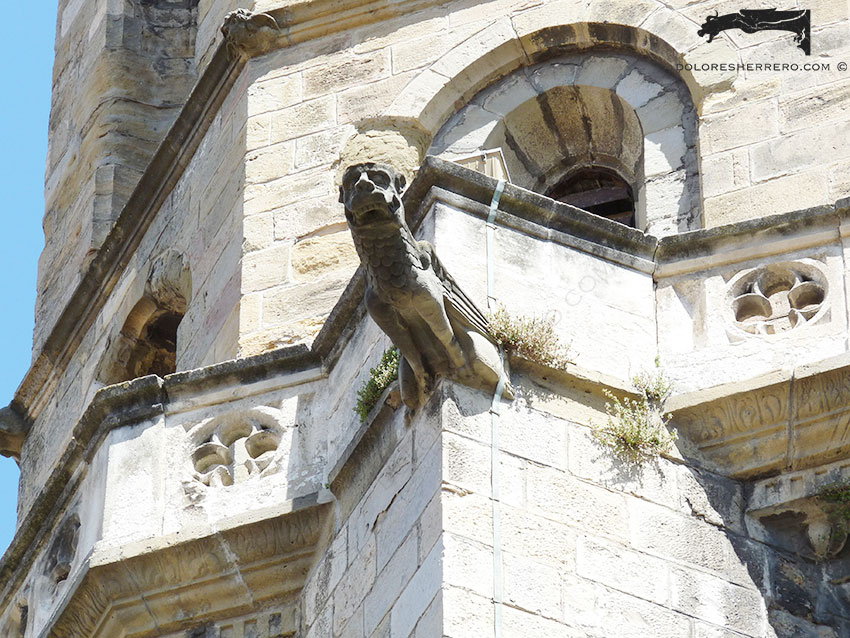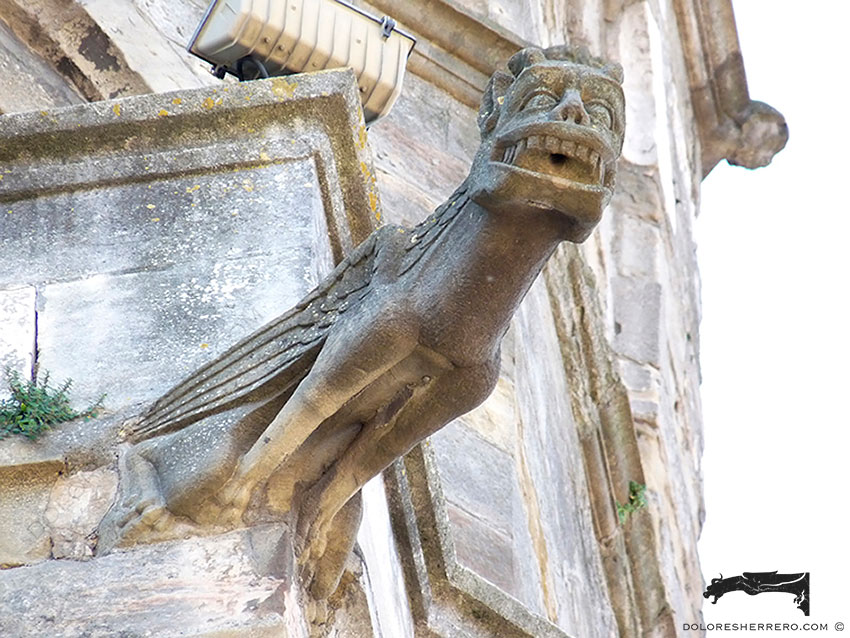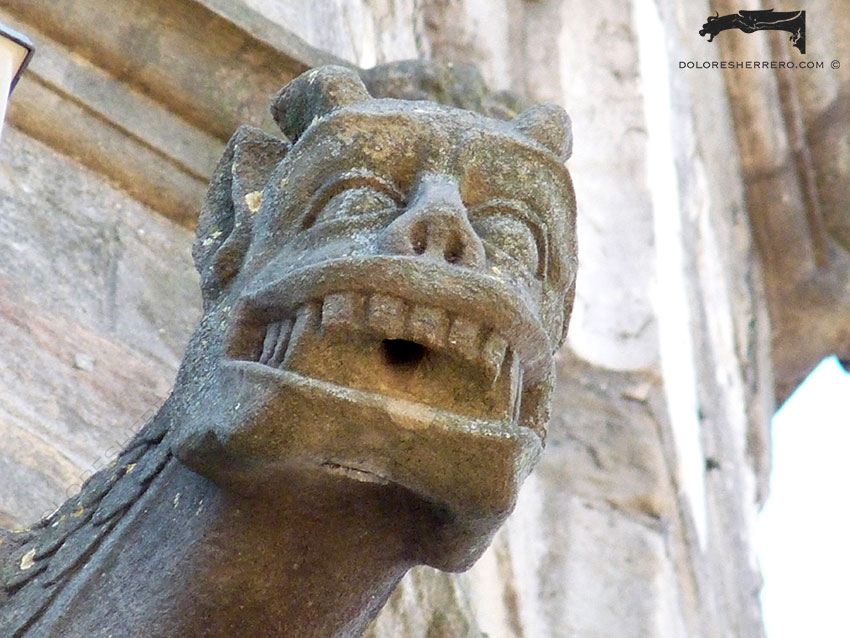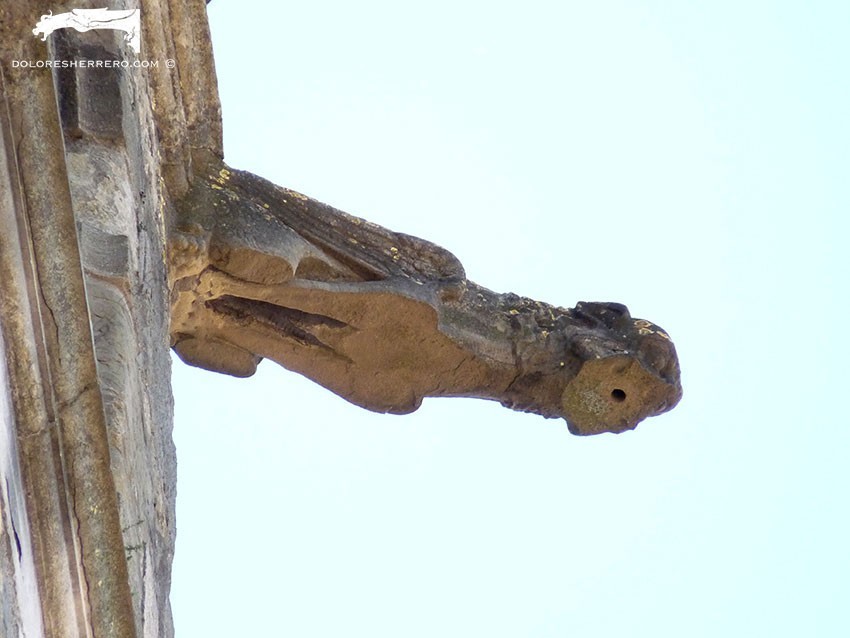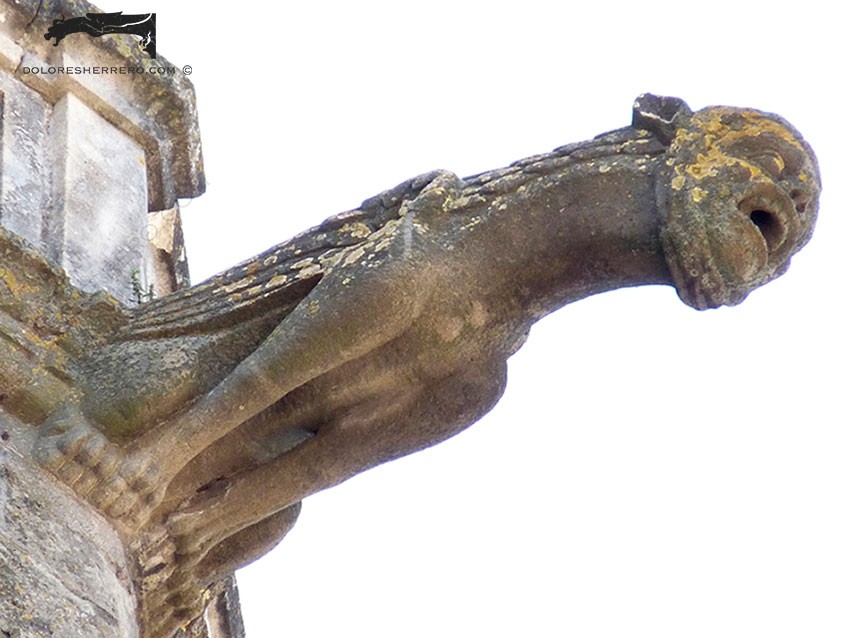A Sculptural Gem in the South of France
Limoux, the town featured in today’s post, is in France, in the Languedoc-Roussillon region. The town is split in two by the Aude river.
Limoux is home to Saint-Martin church, a magnificent monument with some beautiful gargoyles. The town grew around the church, which was built in the 12th century, although a series of changes were made to it in the 14th and 15th centuries. The tower was rebuilt in the 18th century after being destroyed by lightning, and restoration work was also carried out in the 19th century.
Gargoyles of Saint-Martin: Sculptural Mastery and Expressiveness
The gargoyles are lovely, quite slender and stylised. Many of them have been damaged, with cracks showing the stonework and broken or missing parts and limbs. But even in spite of this, they are all superb gargoyles and their worn appearance doesn’t spoil our appreciation of them. When you walk round the outside of the church you can still enjoy looking at them.
Their length makes them look as if they’re about to take flight and their leanness gives them an elegant appearance. The gargoyles of Saint-Martin are very expressive and are skilfully carved, as you can see from the detail in some of their faces and in things like plumage and the lion’s mane.
The iconography is also excellent. Although there aren’t many of them (barely twenty or so) you can spot a wide variety of types: animal monsters (winged quadrupeds), demons, animals like a dog, a lion and an ape, as well as striking anthropomorphic figures.
We invite you to contemplate the gargoyles of Saint-Martin de Limoux, yet another example demonstrating that magnificent gargoyles are not found only in large cities or capitals, but also in small towns and villages, where one can discover churches or civic buildings adorned with astonishing and admirable sculptures. In this case, we will present them organized by typologies, in order to better appreciate their formal and thematic variety.
Gargoyles Representing Animal Monsters
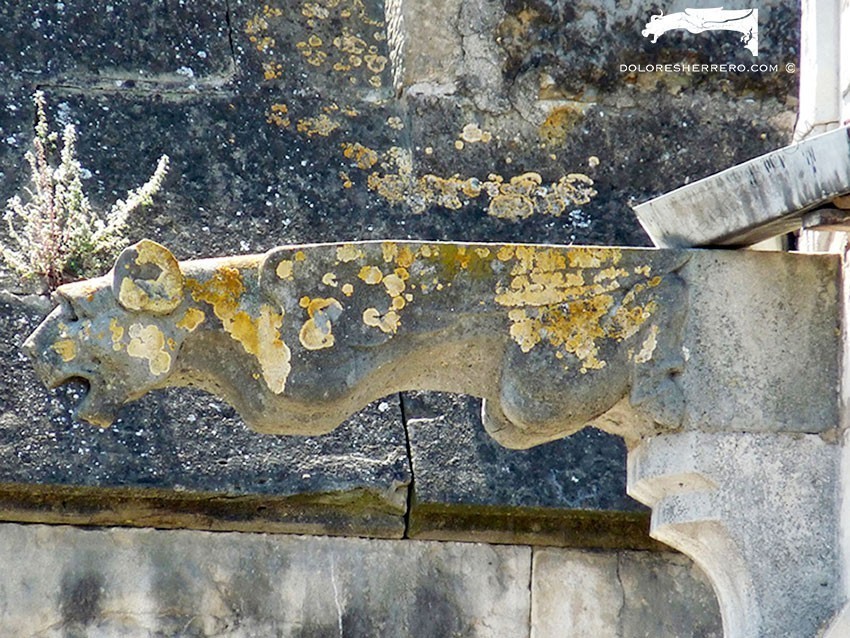
Gargoyles Representing Demons
Gargoyles Representing Real Animals
- Lion
- Lion
- Dog
- Dog
- Ape
- Ape
- Dog
- Dog
Gargoyles Representing Anthropomorphic Figures
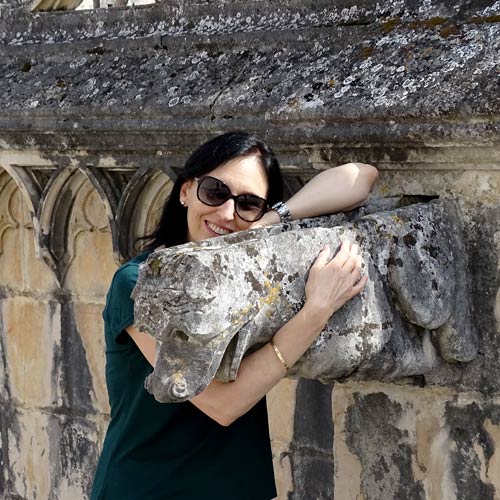
Doctor of Art History and researcher specializing in the study of gargoyles.
I am Dolores Herrero Ferrio, and my thesis, “An Approach to the Study of Gargoyles of Gothic Cathedrals in Castilla and León”, is dedicated to the study of these fascinating figures.
If you like gargoyles and art history, you will also enjoy my book, “The Gargoyle and Its Iconography,” a book I have written with great care for those interested in the world of gargoyles.
I have created my own Encyclopedia of Gargoyles, a Gargopedia to share with you, where you will discover all the secrets and wonders of these enigmatic sculptures.
I hope you enjoy this Gargopedia as much as I have enjoyed creating it, and remember that each gargoyle has a story to tell, and here you will discover them all.
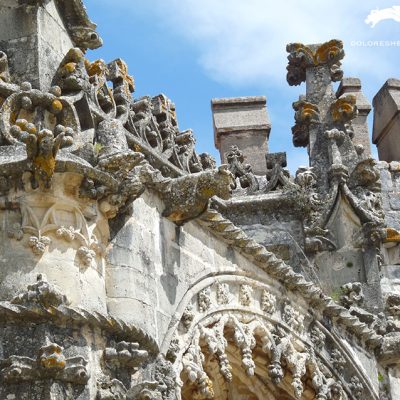 Gargoyles of Tomar in Portugal: Gothic Art and Templar Legacy
Gargoyles of Tomar in Portugal: Gothic Art and Templar Legacy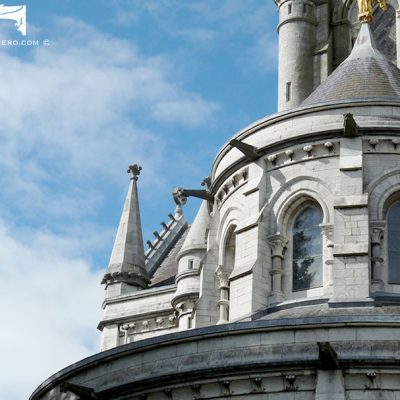 Gargoyles of Cork Cathedral: Fantastic Symbols in the Architecture of Ireland
Gargoyles of Cork Cathedral: Fantastic Symbols in the Architecture of Ireland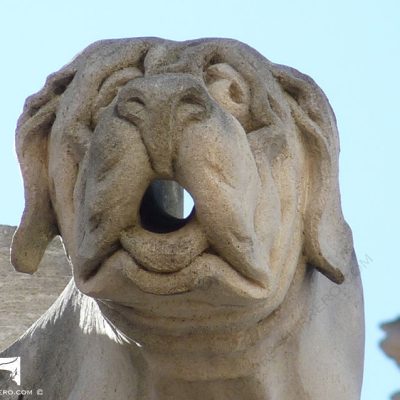 Gargoyles Shaped Like Dogs: Symbolism and Representation
Gargoyles Shaped Like Dogs: Symbolism and Representation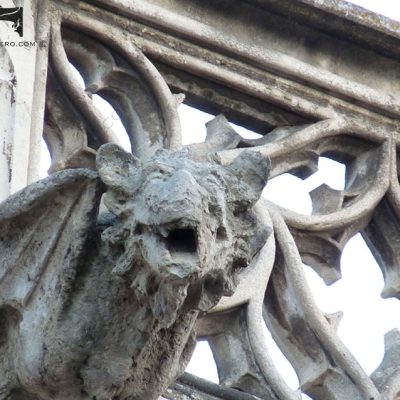 Gargoyles of the Loge de Mer in Perpignan (France): Sculptural Expressiveness in a Gem of Civil Gothic Architecture
Gargoyles of the Loge de Mer in Perpignan (France): Sculptural Expressiveness in a Gem of Civil Gothic Architecture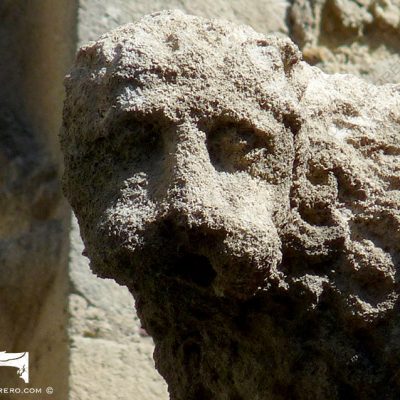 Gargoyles Shaped Like Lions: Symbolism and Representation
Gargoyles Shaped Like Lions: Symbolism and Representation